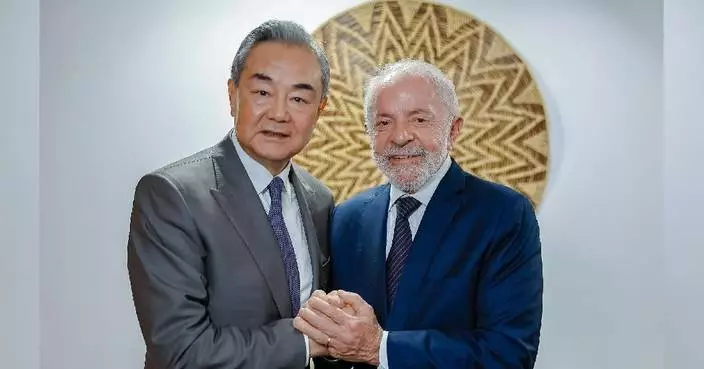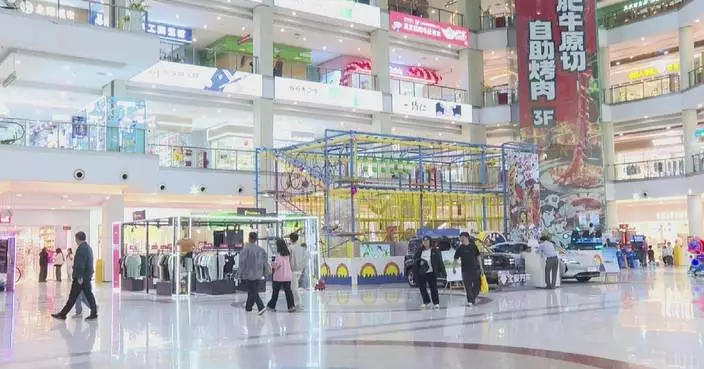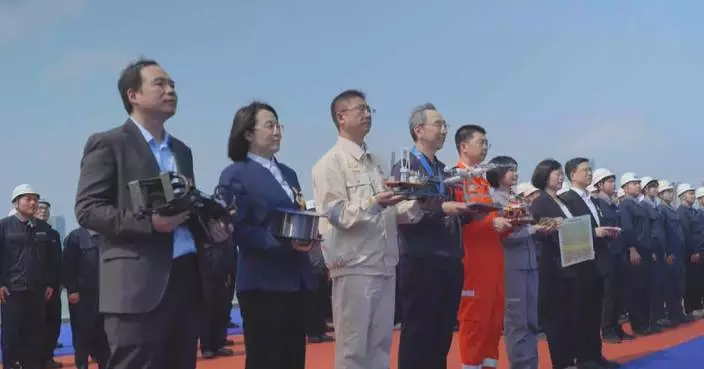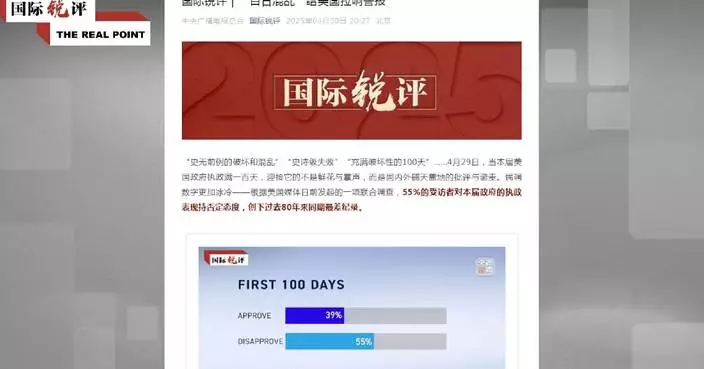The China Pavilion will showcase a diverse range of exhibits covering China's traditional culture, ecological civilization, and technological achievements at the World Expo 2025 which will kick off on Sunday in Osaka, Japan's third largest city.
As one of the largest at the event, the 3,500-square-meter China pavilion reimagines 5,000 years of heritage through 21st-century innovation. The core exhibit of the China Pavilion, titled "Harmony Between Heaven and Man," was created by Chang Shana who combines her in-depth research of Dunhuang murals and patterns with the 24 solar terms.
The third floor of the China Pavilion showcases China's relentless efforts in leading development through innovation.
The most eye-catching feature of this exhibition area is the lunar sample exhibits.
Above the display area, visitors can see the famous Dunhuang flying apsara pattern.
"The flying apsara from the Sui Dynasty (581-618), a central figure in Chang Shana's Dunhuang mural drawing, is integrated with the theme of the moon, reflecting a harmony between the profound romanticism of traditional Chinese aesthetics and the highly advanced technology of modern China. It is also a brilliant expression of Chinese national culture and cultural confidence," said Cui Donghui, a professor at the Central Academy of Fine Arts.
A highlight of the China Pavilion is the display of lunar samples to visitors from around the world.
"This time, we will showcase the samples brought back from the Chang'e-5 and Chang'e-6 missions. They will be the most precious exhibits that the China Pavilion presents to the global audience at this year's expo," said Li Qingshuang, vice president of the China Council for the Promotion of International Trade.
The theme of the China Pavilion at the 2025 Osaka Expo is "Building a Community of Life for Man and Nature: A Future Society of Green Development," highlighting a strong commitment to sustainable and eco-friendly growth.

China Pavilion to display traditional culture, high-tech feats at Osaka Expo
U.S. tariffs on Cambodia, which were set at 49 percent, have sparked concerns among the Southeast Asian country's key export industries such as garment manufacturing amid the ensuing economic uncertainties.
On April 2, U.S. President Donald Trump announced the 49 percent "reciprocal tariff" on goods imported from Cambodia, the highest among all countries. Days later, the U.S. reduced the so-called "reciprocal tariff" to 10 percent for 90 days, offering a window period to Cambodia for negotiations with it.
Cambodian businesspeople say the tariffs have the potential to wreak havoc on the country's manufacturing sector, which, according to data from the World Bank, makes up around a fifth of the country's GDP.
"For U.S. manufacturers, definitely, there will be a big impact. If manufacturers are focusing on U.S. products, they are now in the middle. They don't know what they should do at the moment because the tariff now from Cambodia to the U.S. is actually quite high," said Dr. Ben Li, a Hong Kong investor in Cambodia and Chairman of the Cambodia Chinese Commerce Association.
Nevertheless, Li sees the tariff hike as an opportunity to export more Cambodian goods to the European Union, where a majority of Cambodian exports enjoy duty-free status.
"I always say there will be a light (at the end of the tunnel.) Even now, the U.S. tariff is so high, it's going to be so high after 90 days, we don't know. But, there's still a big market to Japan or to the European Union. There's still a big opportunity there," he said.
The Cambodian investor also believes the development of major infrastructure projects will help support Cambodia's economy.
"Especially the new canal and then the new airport, and the railways which connect to China. I believe once the logistics and infrastructure are built up, it can help the whole country's economy. By reducing the transportation costs, it can also mitigate the tariff costs," he said.
Cambodia and the U.S. held their first tariff negotiations on April 16, with more expected to follow. Local experts said the stakes are high for the country's workers.
"If this negotiation fails, there will be a significant impact. It will include the garment and travel goods sector. These sectors consist of about 1,068 factories and 930,000 workers. The income generated from these sectors is about 3 billion dollars per year. So it would significantly impact Cambodia's economy, jobs and incomes," said Chey Tech, a socio-economic research and development consultant from Dynamic Alliance Consulting.
Despite the potential risks, Tech expressed his optimism about a positive outcome, citing Cambodian Prime Minister Hun Manat's letter to Trump on April 4.
"The Prime Minister's letter confirmed that Cambodia would reduce the tariff rate for U.S. goods to 5 percent. Second, Cambodia is the least developed country. Third, Cambodia produces goods that the developed countries won't produce. We asked whether the U.S. would be able to produce these low-cost products. It cannot," said Tech.
In 2024, Cambodia exported goods of 9.9 billion dollars to the U.S., making it the country's largest market, accounting for 37 percent of Cambodia's total exports.

49-percent US tariffs sparks worry among Cambodia's key export industries





















































